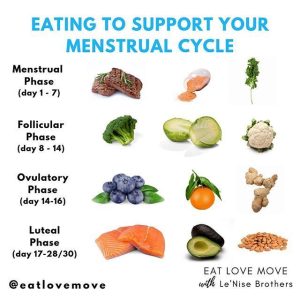Power root ginseng – the special effect of the “velvet root

Power root ginseng – The special effect of the “velvet root
Panax ginseng, also known as Korean ginseng or Asian ginseng, belongs to the Aralia family and is mainly found in the mountainous and forest regions of Korea and China.
The root of the miracle tree has been used for medicinal purposes for thousands of years for its positive effects on the human body. But how exactly does the well-known “power root” work and what ingredients make it up?
Most important ingredients of the power root ginseng and their effect
Ginsenosides
Ginsenosides belong to the group of saponins and make up a large part of the ingredients of ginseng: Up to 150 different ginsenosides have so far been isolated from a single ginseng root.
Ginsenosides affect the human body in many ways, but differ greatly in their properties.
Overall, however, it can be seen that these substances have a preferential effect on the human nervous system and less on other organ structures.
Certain ginsenosides bind to serotonin receptors due to their serotonin-like structure, so that happiness hormones are released, while others bind to GABA and glycine receptors, so that the organism is calmed down.
Phenols
Phenols are an organic compound consisting of a hydroxyl group and a phenyl group.
Phenols have a bactericidal and fungicidal effect in certain concentrations, which is why they were often used as antiseptics for disinfection in the past.
Today, phenols are used solely for the production of other substances, such as acetylsalicylic acid, because of their toxic effect in higher concentrations.
Peptides
Peptides are very small proteins that are linked together by many peptide chains.
Peptides are considered to be antiviral, anti-inflammatory, antibiotic and skin regenerating, in which they can also be predominantly found and exert their effect.
Vitamin C
Vitamin C, also called ascorbic acid has antioxidant effects and can protect blood vessels by thinning the blood and smoothing the inner walls of the vessels.
It can strengthen bones and teeth and keep ligaments and tendons elastic. Many other vitamins can be better absorbed and develop their effect through vitamin C.
C vitamins are involved in the release of important hormones and can keep the immune system in good condition.
B vitamins
All B vitamins together form a vitamin complex in which many interactions take place.
This vitamin complex has positive effects on the synthesis of many substances, such as hormones and transmitters, on the maintenance of the immune system, and on the ability to concentrate and perform.
It can be used to strengthen mucous membranes, hair and nails, and to help the body eliminate toxins produced by smoking, unhealthy diet and environmental factors.
Magnesium
Magnesium plays a major role in heart health and the healthy functioning of muscles and nerves. Many processes in the human organism cannot take place without magnesium.
Sodium
Sodium is one of the most important electrolytes in the human body. It has the ability to bind water and can thus contribute to stable fluid balance and normalization of acid-base balance and blood pressure.
Phosphorus
Phosphorus can be found in many structures of the body, first of all it is a component of human DNA.
Phosphorus can also stabilize the acid-base balance and normalizes the blood’s own pH value. Another field of activity is influencing the effect of certain hormones and calcium metabolism.
Potassium
Potassium ensures functioning muscle activity and stimulus transmission within the heart and nervous system. The function of various ion channels depends on a sufficient potassium concentration.
Potassium also has a significant effect on blood pressure and blood pH.
Iron
Iron is involved in the distribution of oxygen in the body, as oxygen molecules bind to the iron particles of the red blood cells and are thus distributed in the organism via the bloodstream.
Iron is indispensable for the energy production of cells and muscle performance, as both processes require oxygen.
Chromium
Chromium is a trace element and cannot be formed by the human body itself.
It is related to the hormone insulin and helps stabilize blood sugar and cholesterol levels.
Amino acids
Amino acids are protein compounds and are involved in the structure of the entire organism. The function of the immune system is also dependent on amino acids, since the antibodies formed by the immune defense system consist of them.
Essential unsaturated fatty acids
Essential unsaturated fatty acids cannot be produced by the body itself, so they have to be taken in with food.
They ensure the stability and permeability of the cell membrane and the formation of certain hormones, but they also keep the cardiovascular system healthy.
Fields of application of the power root ginseng
Ginseng in diabetes mellitus
Chromium contained in ginseng root can have a positive effect on blood sugar and cholesterol levels, which can help with type 2 diabetes, where there are large fluctuations in blood sugar.
In addition, some ingredients of ginseng, such as some ginsenosides, phosphorus and vitamin C are involved in the release of various hormones and can thus also positively influence insulin secretion.
Ginseng in hypertension
The vitamin C, magnesium, potassium and essential unsaturated fatty acids found in ginseng can provide cardiovascular health benefits.
These substances can stabilize blood vessels and normalize blood pressure and the pH value of the blood.
Ginseng for poor concentration and performance
Many of the ginsenosides from the power root ginseng have the ability to bind to certain activating receptors of the nervous system and thus increase the concentration and performance of the brain. The B vitamins also contribute significantly to the function of the nervous system.
Ginseng for erectile dysfunction
According to studies, ginsenosides are believed to be able to promote the production of nitric oxide in the male corpus cavernosum, which dilates the blood vessels and thus ensures better blood flow to the male genitalia.




